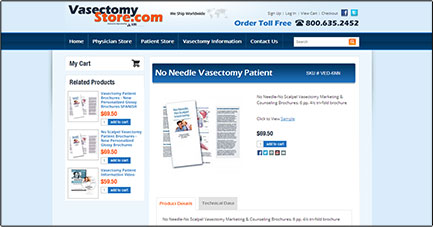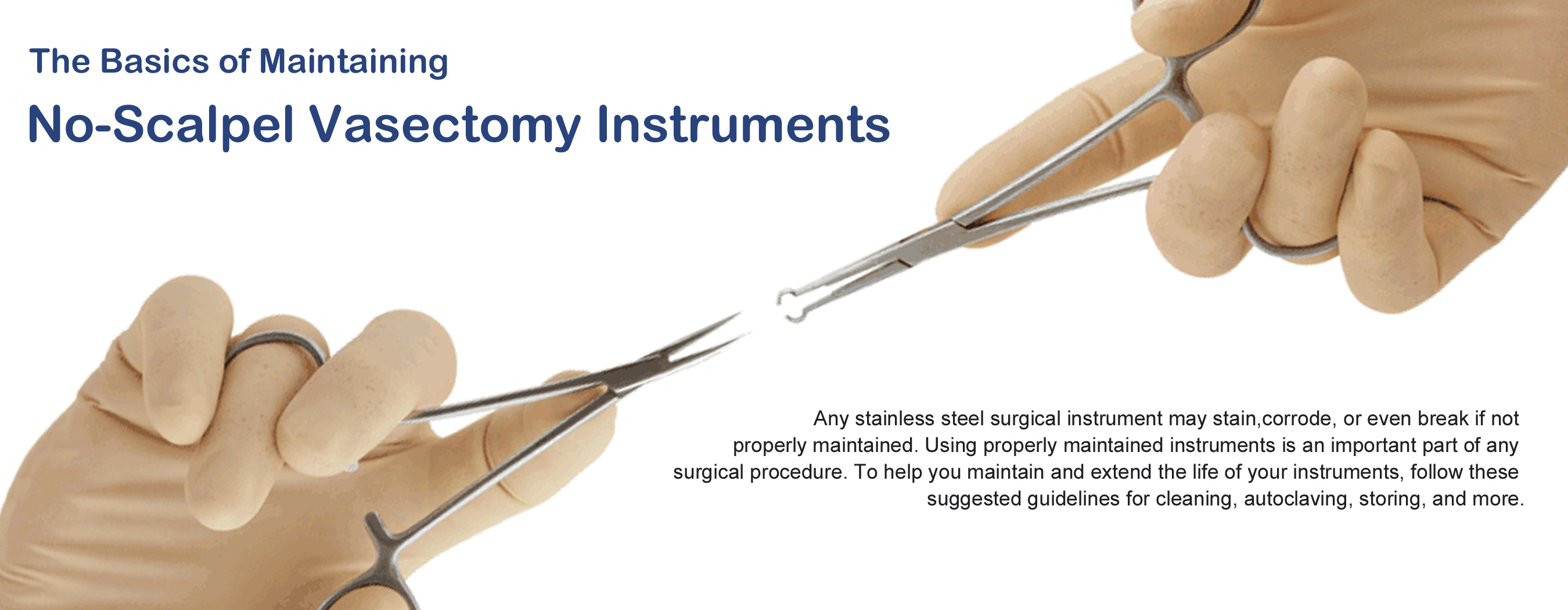|

Vasectomy instruments are most likely to sustain damage during cleaning. It is therefore important that they be cleaned by an experienced handler of instruments using the following recommended steps::............................................................................................................................
1. Instruments should be cleaned immediately after each use.
2. Rinse the instruments under warm running water to remove all blood, tissue, and body fluids from surgery.
3. Briefly soak the instruments in an hemolytic enzyme solution such as HaemoSol. Be certain that only neutral pH (i.e., 7.0) solutions or detergents are used. Low pH detergents, if not fully rinsed off after cleaning, will corrode the protective surface of the stainless steel. High pH detergents will corrode or cause "browning" of the instruments that may impair instrument function.
4. If needed, a soft nylon brush or toothbrush may be used to brush away stubborn particles remaining from the surgery.
5. After the brief soaking and, if needed, gentle brushing, rinse individual instruments completely under running water. While rinsing, take care to open and close the forceps and hemostats to ensure that the hinge areas are rinsed as fully as other areas.
6. Carefully place the instruments on clean paper towels to dry. In the case of the surgical hemostats, the fine tips must be placed face-up on the towels to avoid damaging them.
|










